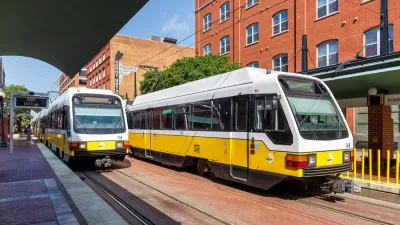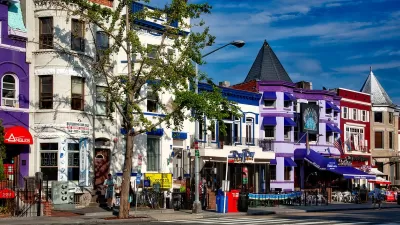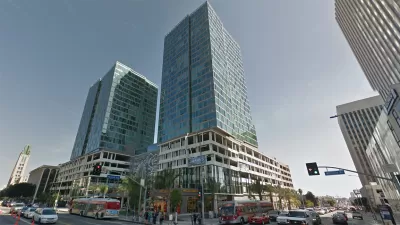Transit should make people's lives better, with density a key component of successful systems.

In an excerpt from his new book “Trains, Buses, People: An Opinionated Atlas of US Transit,” Christof Spieler reflects on what makes transit good, how it should improve people’s lives, and the role of density in developing successful transit systems.
Spieler says he uses transit in Houston and it works for him because he has easy access, service is frequent and efficient, and it takes him where he needs to go. He also points to a broader perspective on what goes into an effective transit system:
We need to talk about what matters—to focus on the quality of service, not the technology that delivers it; to talk about all kinds of transit riders, not just about a narrow target market; to understand that the transit experience depends on buildings and streets and sidewalks as much as it does on stations and trains; and, above all, to talk about getting transit in the right places.
Density is a key factor for transit, says Spieler. “The performance of a rail or BRT line is directly related to the surrounding densities. For example, the most successful light-rail systems in the United States—San Francisco, Boston, Philadelphia, Seattle, Newark, Jersey City, Buffalo, and Houston—serve large areas of over 10,000 people per square mile.”
He says locating transit in densely populated areas is crucial, even while acknowledging the challenges in doing so in the United States — shifts in density, misperceptions about which areas are actually dense, and the difficulties involved in building transit in dense places.
Spiegler also encourages increasing population density around transit:
Almost every transit line has room for new development along it: vacant lots, surface parking, aging single-story retail, underused industrial tracts. Even areas that already have density can be densified, and often the market supports dense new development in areas that already have an established residential market better than in relatively undeveloped areas.
He argues that transit-oriented development does well in the real estate market and urges cities to ease up on land use and zoning regulations that hinder this development and the density that comes with it. Rather, he says, cities should focus on policies that promote affordable housing in locations near transit.
FULL STORY: Excerpt: Many Cities Have Transit. How Many Have Good Transit?

Planetizen Federal Action Tracker
A weekly monitor of how Trump’s orders and actions are impacting planners and planning in America.

Congressman Proposes Bill to Rename DC Metro “Trump Train”
The Make Autorail Great Again Act would withhold federal funding to the system until the Washington Metropolitan Area Transit Authority (WMATA), rebrands as the Washington Metropolitan Authority for Greater Access (WMAGA).

The Simple Legislative Tool Transforming Vacant Downtowns
In California, Michigan and Georgia, an easy win is bringing dollars — and delight — back to city centers.

The States Losing Rural Delivery Rooms at an Alarming Pace
In some states, as few as 9% of rural hospitals still deliver babies. As a result, rising pre-term births, no adequate pre-term care and "harrowing" close calls are a growing reality.

The Small South Asian Republic Going all in on EVs
Thanks to one simple policy change less than five years ago, 65% of new cars in this Himalayan country are now electric.

DC Backpedals on Bike Lane Protection, Swaps Barriers for Paint
Citing aesthetic concerns, the city is removing the concrete barriers and flexposts that once separated Arizona Avenue cyclists from motor vehicles.
Urban Design for Planners 1: Software Tools
This six-course series explores essential urban design concepts using open source software and equips planners with the tools they need to participate fully in the urban design process.
Planning for Universal Design
Learn the tools for implementing Universal Design in planning regulations.
Smith Gee Studio
City of Charlotte
City of Camden Redevelopment Agency
City of Astoria
Transportation Research & Education Center (TREC) at Portland State University
US High Speed Rail Association
City of Camden Redevelopment Agency
Municipality of Princeton (NJ)





























